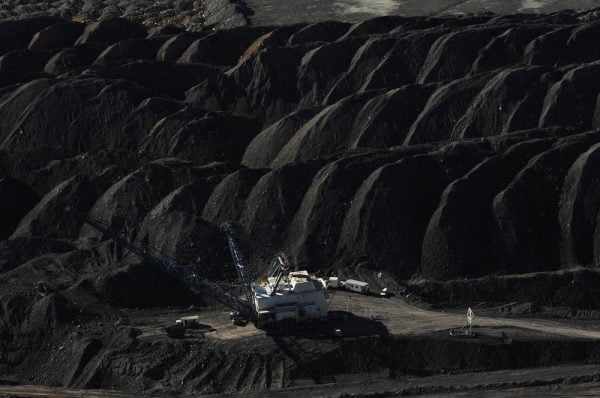The train arriving at the Maputo port, hauling 40 wagons each carrying 2000 tonnes of coal from Botswana, shows how coal producers are riding the growing global demand for coal.
The train into Grindrod‘s Maputo dry bulk terminal in April was the first of its kind from Botswana, as the country steps up coal exports.
Further south, at South Africa’s Richards Bay, coal supplies to Europe are also growing. Between January and May this year, 40% more tonnes of coal were exported to Europe from the Richards Bay Coal Terminal than were exported in all of 2021.
Europe is stepping up coal imports as an alternative to energy imports from Russia. The European Commission now expects the EU will use 5% more coal than previously expected over the next decade.
Coal-producing countries are rubbing their hands with glee.
“We have received inquiries from Europe and so we want to (export),” Botswana President Mokgweetsi Masisi told Reuters in May.
“Typically what we’ve been getting is 50,000 tonnes a month is what they want to get, but we’ve also had others (inquiring about) long-term contracts. (We are) looking at a million tonnes a year from individual countries (combined),” Botswana’s Energy Minister Lefoko Moagi said.
Coal prices are now hitting record highs, and Botswana and South Africa have grabbed the opportunity with both hands.
Zimbabwe? Not so much.
Coal miners in a deep hole
Local coal producers are struggling to meet domestic demand and export needs.
The Hwange power station buys 90% of all coal produced by miners, including Hwange Colliery and Makomo Resources. But payments to coal suppliers are erratic. In 2020, the government allowed the power station to stop paying coal suppliers in US dollars, hurting their operations.
Coal producers for years had to take US$29 per tonne, paid for in local currency. This is at a time coal prices are soaring globally. According to Exxaro, one of SA’s biggest coal producers, coal prices averaged US$270 per tonne in the first half of this year. This was nearly double the price from the same period last year.

Until recently, Zimbabwean coal miners were also tied to short-term coal supply contracts. These left them with little chance of securing the funding they need to retool.
The result has been predictable. With debts piling up and profits falling, Makomo slid into corporate rescue in November. Production stopped, only restarting in June, but at a fraction of capacity.
“We are still working on a turnaround plan, but production has resumed,” Bulisa Mbano, who is leading the corporate rescue mission at the mine, said in June.
At Hwange Colliery, the company plans to raise output. But it lacks the capital to develop resources as much as it needs to.
Last year, Hwange Colliery grew coal production by 49.5%. The company plans to increase output through a US$15 million equipment supply deal and by opening new mining areas.
Coal hopes up?
The Zimbabwe Coal Producers Association is hoping to take advantage of rising export demand. Even if coal miners dig more coal, they face the problem of inefficient rail. Producers are clearing logistical hurdles, including deals to improve rail links to Maputo.
“We are interested in supplying the European market,” the organisation says. “Now that the prices are as high as they are, exports from landlocked regions are now viable.”
Domestic demand for coal will rise sharply next year when Hwange power station brings on stream two new generator units of a combined 600MW. Yet, already, producers are unable to meet local needs, let alone exports. Smaller thermal power stations missed their power output targets in the first quarter of 2022. This was partly due to low coal stocks, according to a report by the Zimbabwe Power Company.
While Zimbabwean coal miners struggle with low prices and delayed payments, the story is different next door. In Botswana, India’s Jindal Steel & Power plans to build a new coal mine this year, targeting the export market. The Morupule Coal Mine has just signed US$20 million worth of supply contracts to Asia and Europe.
The coal train from Botswana to Maputo passes through Zimbabwe. It’s a poignant symbol of how, yet again, an opportunity is passing the country by.
Some 26 billion tonnes of coal lie under Zimbabwe’s earth, enough to last 834 years. But years of failure to invest means that the country can only watch as the coal boom roars past.
NewZwire





